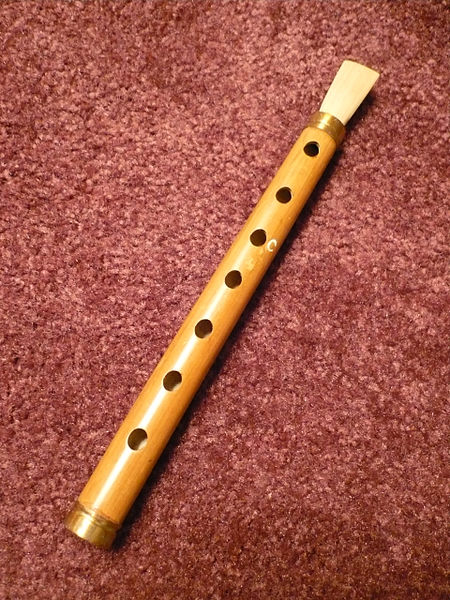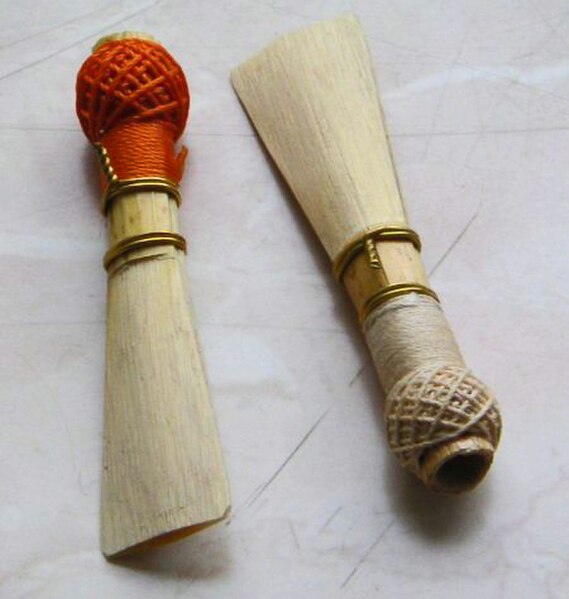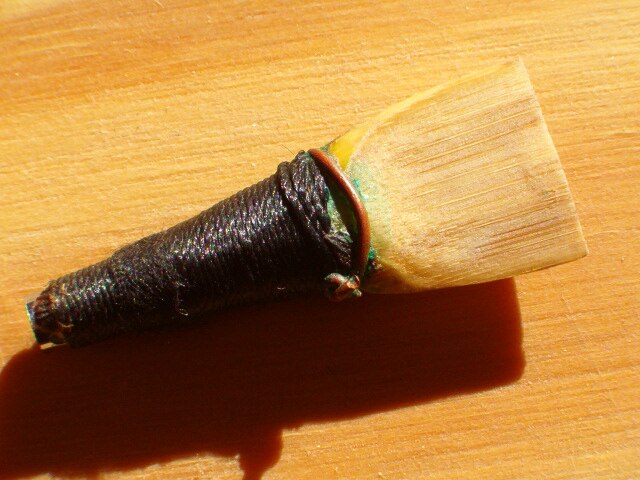The guan is a Chinese double reed wind instrument. The northern Chinese version is called guanzi or bili and the Cantonese version is called houguan. It is classified as a bamboo instrument in the Ba Yin system. Unlike other instruments in the double-reed family of woodwinds which mostly have conical bores, such as the Chinese suona or the Western oboe, the guan has a cylindrical bore, giving its distinctive mellow, yet piercing buzz-like timbre.
Northern Chinese hardwood guanzi
Detail of 12th century Song dynasty painting depicting three guan (double-reed pipe) players and two dizi (transverse flute) players, accompanied by a paiban (wooden clapper), performing in the home of Han Xizai, a minister to the Song dynasty emperor Li Houzhu
A small Cantonese houguan in the key of C
A double reed is a type of reed used to produce sound in various wind instruments. In contrast with a single reed instrument, where the instrument is played by channeling air against one piece of cane which vibrates against the mouthpiece and creates a sound, a double reed features two pieces of cane vibrating against each other. This means, for instruments with the double reed fully exposed, that the air flow can be controlled by the embouchure from the top, bottom and sides of the reed. The term double reeds can also refer collectively to the class of instruments which use double reeds.
Bassoon reeds, showing the oval opening (bottom left), which is actually a vesica piscis
Bagpipe of Portugal reed (gaita transmontana)
Bassoon reed
Bombard reed







